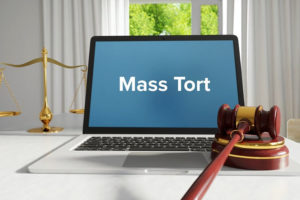Everything You Need to Know About Mass Tort Lawsuits

Thanks in large part to popular culture and entertainment, most people are at least generally familiar with a lot of legal processes and terms. Curiously enough, mass torts are usually not one of them, as we constantly receive questions about this type of lawsuit. As a dedicated personal injury firm, mass torts are a large part of our day-to-day operations, and a large part of the personal injury field as a whole. Below are a few of the most frequently asked questions with regards to mass tort lawsuits.
What Constitutes a Mass Tort Lawsuit and How are They Resolved?
Mass tort lawsuits are civil proceedings in which there are multiple injury victims (plaintiffs) who are filing suit against the same defendant or group of defendants. These cases arise whenever multiple people have sustained similar injuries or illnesses due to the reckless or negligent behavior of one or more defendant(s). The defendant will be an individual person in some cases, but for the most part, mass tort cases involve manufacturers who have sold harmful or defective products, drugs, or devices. These types of suits are designed to streamline the court process by reducing the overall number of cases and combining them into a single proceeding.
For a free legal consultation, call (725) 900-9000
When you participate in a mass tort lawsuit, your attorney will (or should) consult with you about whether you want your case to be handled individually or as part of the collective suit. Either way, the process of resolving a mass tort case is usually complicated and extensive, as attorneys on both sides will debate issues of fact and how a certain law should or not should apply.
Another big issue with mass tort litigation has to do with causation of injuries– in all cases, the plaintiffs’ attorneys will argue that their clients’ injuries were directly related to the behavior or product of the defendant. The problem is that a lot of plaintiffs will develop latent injuries over the course of the suit, meaning that they developed after the accident or exposure in question. It is very hard to effectively prove that defendants should be liable for latent injuries, and so these suits can have a tendency to get bogged down with arguments relating to causation.
Overall, mass torts take much longer to resolve than regular personal injury suits because of the increased number of plaintiffs and proceedings. Potential claimants should go into the suit knowing that it will likely take multiple years to fully resolve.
Is There a Difference Between Mass Torts and Class Action Suits?
Click to contact our personal injury lawyers today
Perhaps the most common question we are asked about mass tort cases has to do with whether or not they are the same as class action lawsuits. In a lot of ways, they are similar– they both revolve around numerous parties who have suffered similar damages from the same defendant(s), and they both work to combine multiple suits into a single action. The difference, then, has to do with how they are handled by the court system and how the group of plaintiffs is categorized.
Complete a Free Case Evaluation form now
In class action suits, courts treat the group of plaintiffs as a singular party, with one individual chosen to act as the “class representative.” When you join in a class action suit, you will have to claim and file your suit by a set date, and if you do not, you will be barred from participating in the case and might just be plumb out of luck in terms of legal avenues. They also have strict criteria that must be completely met in order for a plaintiff to qualify for the “class.” Class action suits are narrowly tailored to a specific cause with specific damages.
Conversely, mass tort cases are less strict in multiple ways. The first, as mentioned above, is that plaintiffs may choose for their case to be handled individually or as part of the group– either way, it still falls under the same mass tort suit. Additionally, mass torts are meant to accommodate a wider range of potential plaintiffs.
To give an example, a hypothetical class action suit would involve a narrowly-tailored focus, such as all those who suffered broken bones after falling off of a defective treadmill, whereas a mass tort case might involve a dangerous drug that affected people in multiple ways, including cancers and other serious conditions.
What are the Most Common Kinds of Mass Tort Cases?
All mass tort cases are unique, but there are a few categories that we see more often than others, including:
- Product Liability: These are the most common mass tort cases, as harmful products will affect people in different ways. This field includes defective drugs and medical devices, which are usually the largest and most popular cases.
- Disasters: Mass tort cases can also be centered around natural and man-made disasters that affect a large number of people. The recent Texas ice storms are sure to garner multiple mass tort and class action lawsuits.
- Contamination: Whenever a large number of people are exposed to harmful chemicals or gases, a mass tort case is usually the most effective solution
Contact Trusted Mass Tort Attorneys
If you’ve been injured by the harmful product or services of another and wish to begin the process of a mass tort lawsuit or join an existing lawsuit, the experienced mass tort attorneys from Van Law Firm are the right choice to navigate through the complexities of your case and recover the most compensation possible. We’ve guided our clients through innumerable mass tort cases, and with a 5-star online rating, the results speak for themselves. Call our office nearest you now for more information and a free consultation.
No obligation consultations are always free.
Let Us Help You! Call Now: (725) 900-9000

